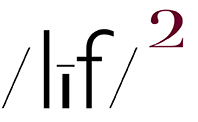“Why do most great pictures look uncontrived? …if the goal of art is to be reached: only pictures that look as if they had been easily made can convincingly suggest that beauty is commonplace.” – Robert Adams
“The everyday, or the commonplace, is the most basic and the richest artistic category. Although it seems familiar, it is always surprising and new. But at the same time, there is an openness that permits people to recognize what is there in the picture, because they have already seen something like it somewhere. So the everyday is a space in which meanings accumulate, but it's the pictorial realization that carries the meanings into the realm of the pleasurable.” Jeff Wall
I have always thought that the best pictures are those that look like the picture maker saw something and then made a picture of what he/she saw with the intent of showing us what he/she saw. No flashy technique or slathering of art sauce in either the the making of or the post processing thereof cuz the picture maker is confident enough, re: his/her vision, to leave well enough alone. Consequently, I am very comfortable with Adams’ proscription other than…
….his idea that “beauty is commonplace”.
My feelings about the commonplace is much more aligned with Jeff Wall’s idea that; a) the commonplace, is the most basic and the richest artistic category, and b) it's the pictorial realization that carries the meanings into the realm of the pleasurable.
In my pursuit of making-the act of pictorial realization-objects, aka: photos in one form of print or another, that fall into the realm of the pleasurable, aka: interesting to look at / view, I am drawn to the commonplace for its wealth of picture making possibilities. I am drawn to it, not because the commonplace is intrinsically beautiful-quite the contrary, it is most often chaotic and unremarkable in and of itself-but rather for “challenge” of documenting the form, without any sublimation of the literal referent’s surface detail, that underlies the apparent chaos.
To be certain, I am not in the business of making pictures which suggest that beauty is commonplace. On the other hand, what my pictures might suggest (for those looking for suggestions) is that the fodder for making a beautiful object, a photo print in and of itself independent of what is litteraly depicted, is everywhere to be seen in the everyday / commonplace world around us.

